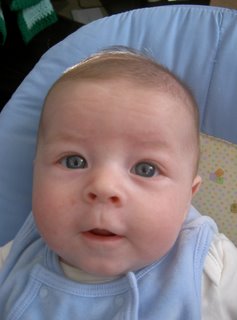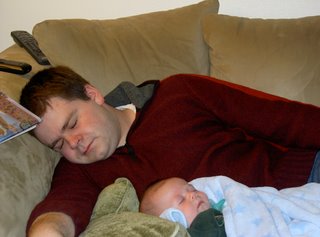I've been looking into something called HDR imaging recently; the idea is that you can take a picture at multiple exposures and combine the images to have a lot more detail than your monitor is capable of displaying, process the image, and then map it back to a format your monitor can display. Perhaps you've tried to take a picture indoors, but all the windows are overexposed -- or an outdoors shot where the sky is overexposed, but the rest of the scenery isn't. HDR imaging fixes those kind of problems, and also makes for some very interesting artistic possibilities. The
Cambridge Photography Gallery has some very nice examples. Programs that help you do that are not cheap though (Photoshop CS2 comes to mind). I started thinking about it though, and figured I could probably design a program myself that would do it. I spent an hour awake in the middle of the night last week thinking about it, and finally decided to try on Friday. It only took me an hour or so, which isn't bad considering I haven't really done anything in c# before and just decided to give it a try. I used images from another site that offers a $99 HDR program,
Photomatix, and while my images don't look the same, they do look pretty decent.
The first shot is one with a well exposed sky & clouds, but underexposed ground:

The next shot has a well exposed ground, but an over exposed sky:

My final result (with a bit of saturation enhancement, which I was just too lazy to code in at the moment):

For those of you who may be interested,
I'll even tell you the secret of my marvelous invention! It's late and Will just went back to sleep, so I don't have time to clean up the jargon though.
I started with the over exposed image, and at a certain brightness threshold, began to blend in a part of the underexposed image. So when the clouds started to get "too bright" I'd blend in a bit of the other image. Perhaps the idea was flawed, or I shouldn't have stayed in the RGB colorspace, but I ended up with a funny result:

Ewww! It was pretty obvious there was a bug. One theory: I was just blending in the RGB values of the other image and producing a non-invertable response curve like the one below.

I played with a few threshold values... and when I removed the threshold and started blending immediately, I got a good result. So instead of waiting until part of the image was REALLY bright, I started blending the two immediately, with more blending the brighter the image got.
I was a bit disappointed when I looked over my code and realized that
I hadn't really created a true HDR imaging program. My algorithm actually translates into a simple alpha mask (a grayscale negative of the over exposed image used as a transparency mask for the underexposed image does exactly the same thing).
I may clean up the code and post the program on blogger later (or host it on my FTP server if blogger won't let me post it).






 We enjoyed being able to take pictures of Will using our new camera -- the flash is smart enough to not blind/redeye/washout his entire face.
We enjoyed being able to take pictures of Will using our new camera -- the flash is smart enough to not blind/redeye/washout his entire face.











